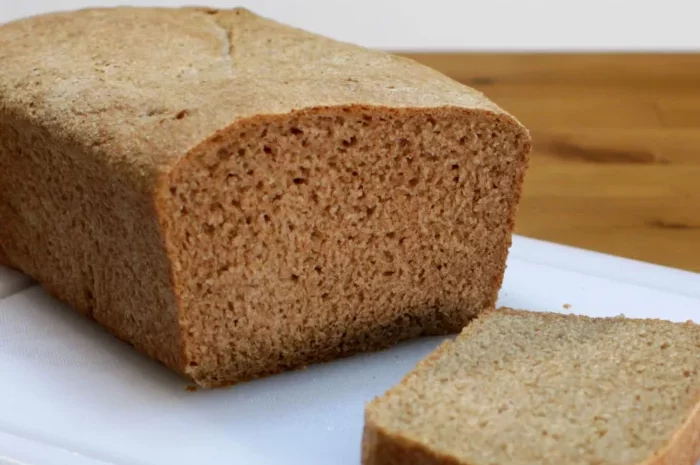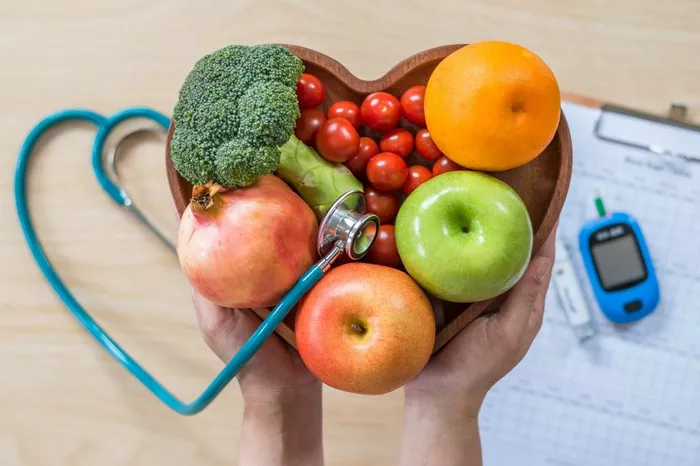Managing diabetes effectively requires careful attention to diet, as the foods you eat have a direct impact on your blood sugar levels. The diabetic diet isn’t about deprivation but about making healthier food choices that can help regulate blood glucose levels, support overall health, and prevent complications. In this article, we’ll explore the key foods that are beneficial for those managing diabetes, providing you with a comprehensive guide to what you should eat to maintain a balanced and healthy diet.
The Role of Carbohydrates in the Diabetic Diet
Carbohydrates have the most significant impact on blood sugar levels, so managing carb intake is crucial for people with diabetes. However, not all carbohydrates are created equal. Understanding the difference between simple and complex carbohydrates can help you make better dietary choices.
Simple vs. Complex Carbohydrates
Simple Carbohydrates: These are found in foods like sugary snacks, sodas, and white bread. They are quickly absorbed into the bloodstream, causing a rapid spike in blood sugar levels. These should be limited or avoided in a diabetic diet.
Complex Carbohydrates: These are found in whole grains, legumes, vegetables, and fruits. They are digested more slowly, leading to a gradual rise in blood sugar levels. These should be the primary source of carbohydrates in a diabetic diet.
Choosing the Right Carbohydrates
Focus on high-fiber complex carbohydrates. Fiber slows the digestion and absorption of sugars, which can help regulate blood sugar levels. Some examples of fiber-rich foods include:
Whole Grains: Brown rice, quinoa, barley, and whole wheat products.
Legumes: Beans, lentils, and chickpeas.
Non-Starchy Vegetables: Broccoli, spinach, kale, and bell peppers.
Fruits: Berries, apples, and pears (in moderation due to their natural sugar content).
Protein: A Vital Component of the Diabetic Diet
Protein is essential for maintaining muscle mass and providing a steady source of energy. It also has a minimal impact on blood sugar levels, making it a crucial part of a diabetic diet.
Best Sources of Protein
Lean Meats: Chicken, turkey, and lean cuts of beef or pork.
Fish: Fatty fish like salmon, mackerel, and sardines are rich in omega-3 fatty acids, which are beneficial for heart health—a critical concern for those with diabetes.
Plant-Based Proteins: Tofu, tempeh, and legumes are excellent sources of protein, especially for vegetarians and vegans.
Eggs: A versatile and nutritious source of protein that can be incorporated into various meals.
Low-Fat Dairy Products: Greek yogurt, cottage cheese, and milk (in moderation).
Balancing Protein and Carbohydrates
When consuming meals, it’s important to balance protein with carbohydrates to prevent spikes in blood sugar levels. For example, pairing a small portion of whole-grain rice with grilled chicken and steamed vegetables can create a balanced meal that won’t cause a significant rise in blood glucose levels.
Healthy Fats: Essential for Heart Health
While fats are often viewed with caution, not all fats are harmful. In fact, healthy fats are essential for heart health, and they can help improve blood sugar control by slowing down digestion and absorption.
Sources of Healthy Fats
Monounsaturated Fats: Found in olive oil, avocados, and nuts like almonds and walnuts.
Polyunsaturated Fats: Found in fatty fish, flaxseeds, chia seeds, and sunflower oil.
Omega-3 Fatty Acids: Particularly beneficial for reducing inflammation and supporting cardiovascular health. These are abundant in fatty fish, flaxseeds, and walnuts.
Fats to Avoid
Trans Fats: These are found in processed foods, baked goods, and many fried foods. They can increase the risk of heart disease and should be avoided.
Saturated Fats: Found in red meat, full-fat dairy products, and certain oils like coconut and palm oil. While not as harmful as trans fats, they should be consumed in moderation.
The Importance of Vegetables in a Diabetic Diet
Vegetables are a cornerstone of a healthy diet, particularly for those managing diabetes. They are low in calories and carbohydrates but high in vitamins, minerals, and fiber. Non-starchy vegetables should be included in every meal.
Best Vegetables for Blood Sugar Control
Leafy Greens: Spinach, kale, and arugula are low in carbohydrates and high in fiber and antioxidants.
Cruciferous Vegetables: Broccoli, cauliflower, and Brussels sprouts are rich in fiber and essential nutrients.
Peppers: Bell peppers and hot peppers are low in carbs and high in vitamins A and C.
Tomatoes: Rich in vitamins C and E, as well as antioxidants like lycopene.
Zucchini and Squash: Low in carbohydrates and versatile for various dishes.
Starchy Vegetables: Eat in Moderation
While starchy vegetables like potatoes, corn, and peas can be part of a diabetic diet, they should be consumed in moderation due to their higher carbohydrate content. Portion control is key when including these in your meals.
Fruits: Nature’s Sweet Treats
Fruits are a natural source of vitamins, minerals, and fiber. However, they also contain natural sugars, so it’s important to choose fruits that have a lower glycemic index and consume them in moderation.
Best Fruits for Diabetes
Berries: Strawberries, blueberries, and raspberries are low in sugar and high in fiber and antioxidants.
Apples: With their skin on, apples provide a good source of fiber, which helps slow the absorption of sugar.
Pears: Like apples, pears have a lower glycemic index and are a good source of fiber.
Citrus Fruits: Oranges, grapefruits, and lemons are rich in vitamin C and have a moderate glycemic index.
Fruits to Limit
Bananas: Although nutritious, bananas are higher in carbohydrates and should be consumed in smaller portions.
Grapes: These have a higher glycemic index and can cause a quicker rise in blood sugar.
Tropical Fruits: Pineapple, mango, and papaya are higher in sugar and should be eaten sparingly.
Dairy Products: A Mixed Bag
Dairy products can be a good source of calcium and vitamin D, but they also contain carbohydrates, so choosing the right type is essential.
Best Dairy Choices
Greek Yogurt: Low in carbohydrates and high in protein, it’s a better choice than regular yogurt.
Cottage Cheese: A good source of protein with minimal carbs.
Low-Fat Milk: Can be consumed in moderation, but be mindful of portion sizes.
Cheese: Opt for lower-fat versions and keep portions small to manage calorie and fat intake.
Dairy Products to Limit
Flavored Yogurts: Often loaded with added sugars, making them less suitable for a diabetic diet.
Full-Fat Milk: Higher in saturated fats, which can be detrimental to heart health.
Ice Cream: High in sugar and fat, making it a poor choice for managing blood sugar levels.
Whole Grains: The Better Carbohydrate Choice
Whole grains are a much better option than refined grains because they contain more fiber, which can help regulate blood sugar levels.
Best Whole Grains for Diabetes
Quinoa: A complete protein that is also high in fiber.
Brown Rice: A better choice than white rice, as it has a lower glycemic index.
Oats: Rich in soluble fiber, which can help lower blood sugar and cholesterol levels.
Barley: High in fiber and has a lower glycemic index.
Buckwheat: A great alternative to traditional grains, with a high content of fiber and nutrients.
Grains to Avoid
White Bread and Pasta: Made from refined grains that cause rapid spikes in blood sugar.
White Rice: Has a high glycemic index and should be limited in a diabetic diet.
Processed Cereals: Often contain added sugars and refined grains, making them less suitable for blood sugar control.
Beverages: What to Drink and What to Avoid
Beverages can be a hidden source of sugar and calories, so it’s important to choose wisely.
Best Beverage Choices
Water: The best choice for hydration without affecting blood sugar levels.
Herbal Teas: Calorie-free and a good alternative to sugary drinks.
Black Coffee: Can be consumed in moderation, but avoid adding sugar or high-fat creamers.
Unsweetened Almond Milk: A low-carb alternative to regular milk.
Beverages to Avoid
Sugary Drinks: Sodas, sweetened teas, and energy drinks can cause rapid spikes in blood sugar levels.
Fruit Juices: Even 100% fruit juice can be high in natural sugars and should be consumed in very small amounts, if at all.
Alcohol: Can affect blood sugar levels and interact with diabetes medications, so it should be consumed cautiously and in moderation.
The Role of Portion Control
While choosing the right foods is crucial, portion control is equally important in managing diabetes. Even healthy foods can cause blood sugar spikes if consumed in large quantities. Here are some tips for portion control:
Use Smaller Plates: This can help you control portions and reduce the temptation to overeat.
Measure Your Food: Use measuring cups or a food scale to ensure you’re eating appropriate portions.
Be Mindful of Snacks: Healthy snacks can help regulate blood sugar levels, but they should be portion-controlled.
Eat Regularly: Skipping meals can lead to overeating later on, which can cause blood sugar fluctuations.
The Importance of a Balanced Diet
A balanced diet for diabetes doesn’t just focus on blood sugar control but also on overall health. This includes getting a variety of nutrients from different food groups:
Vitamins and Minerals: Ensure you’re getting enough vitamins and minerals from your diet, particularly vitamin D, calcium, potassium, and magnesium.
Antioxidants: These help protect your body from damage caused by high blood sugar levels and are found in fruits, vegetables, nuts, and seeds.
Fiber: A high-fiber diet can help improve blood sugar control and support digestive health.
Meal Planning and Preparation
Effective meal planning is essential for managing diabetes. It helps you control your blood sugar levels, ensures balanced nutrition, and prevents the temptation of unhealthy food choices.
Tips for Meal Planning
Plan Ahead: Create a weekly meal plan that includes a balance of proteins, healthy fats, and complex carbohydrates.
Prepare Meals in Advance: Cook in batches and store meals in portioned containers for easy access throughout the week.
Keep Healthy Snacks on Hand: Have nutritious snacks like nuts, seeds, and fresh vegetables ready to grab when hunger strikes.
Monitor Your Blood Sugar: Track your blood sugar levels regularly to see how different foods affect you, and adjust your meal plan accordingly.
Sample Meal Plan for Diabetes
Breakfast: Greek yogurt with mixed berries and a sprinkle of flaxseeds.
Lunch: Grilled chicken salad with spinach, avocado, cherry tomatoes, and a vinaigrette dressing.
Snack: A handful of almonds and an apple.
Dinner: Baked salmon with quinoa and steamed broccoli.
Evening Snack: A small portion of cottage cheese with cucumber slices.
See also: What Type of Diet Should a Diabetic Eat?
Conclusion: Embracing a Healthy Diet for Diabetes
Managing diabetes through diet is a lifelong commitment, but it doesn’t have to be daunting. By focusing on nutrient-dense foods that stabilize blood sugar levels, practicing portion control, and planning meals in advance, you can enjoy a varied and satisfying diet while effectively managing your condition. Remember, it’s not about perfection but making consistent, healthy choices that support your overall well-being. With the right foods and a balanced approach, you can take control of your diabetes and live a healthy, fulfilling life.
Related topics:
What Should Diabetics Eat First Thing in the Morning?



























